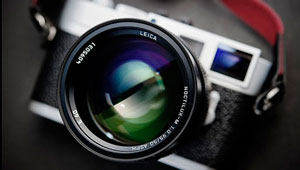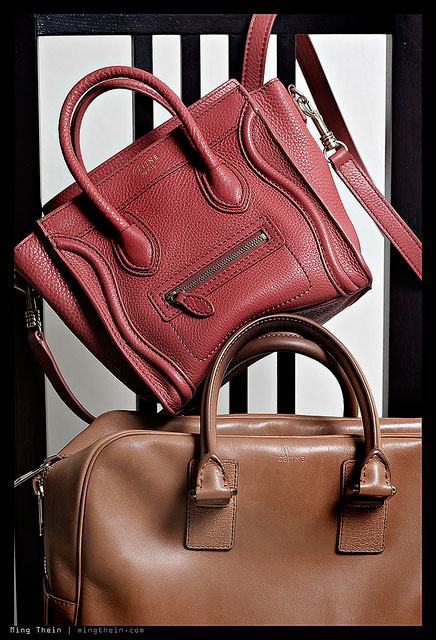
What do cameras, watches and handbags have in common?
Easy: for the most part, they’re luxury items. The most basic entry-level models have long past the point of sufficiency; if you can’t get a good image out of a Nikon D3200, then you should be examining your technique, not your camera body.
Similarly, precise, cheap watches are available to the masses — and have been for some time; yet people are still happy spending tens of thousands of dollars on a luxury timepiece. As a watch photographer, I’m guilty of supporting that industry. And let’s not even start talking about the legendary Hermes Birkin; even before you reach that territory, there’s plenty of choice inhabiting the $3-5,000 mark — and this is almost considered “mass market” by a number of brands.
We live in an era of conspicuous consumption. Most of you reading this will have the luxury of buying something because you want to, not because you strictly need to; yet we’re conditioned very much to think otherwise by our peers, the companies selling us the goods and society in general. Would you be prouder to own a Rolex or a Casio? Which would tell the time more accurately? (It’s the Casio; all quartz-operated watches are much, much more accurate than mechanical watches. Simply, there’s a lot less to go wrong — and digital technology either works or it does’t; there’s no semi-accurate state.)

Curiously though, the same can’t always be said for cameras.
The chief difference is that almost all luxury goods are an end unto themselves: you buy a Patek because it’s a Patek, not because it will let you tell the time with any greater precision, or aesthetic value, or with more information. Whether your Kelly looks better than the other person’s Chanel is subjective; you don’t create anything with it.
Cameras, on the other hand, are completely different: you do create with them. And for the most part, they are tools. Paying more usually gives you a better tool; this in turn, given mastery of the camera’s functions, should give you the ability to make better pictures.

There are three problems with this hypothesis:
- Firstly, most people buy far more camera than they need, either because they can, because there might be some day when they need the 10 fps panorama stitch feature, the 600mm field of view or the weather sealing.
- Secondly, most people have no idea what they need.
- Thirdly, there are enough rich, tasteless people around that a limited edition platinum-and-whale-scrotum leather Ultraflex-9 will sell out. These accoutrements add zero functionality to the camera — I cannot think of anything functionally that the Titanium M9 will do better than a regular M9, other than perhaps not conduct heat or increase the size of a potential insurance claim. They will not make you better photographers.
Now, there’s nothing wrong with selling an aesthetically unique edition — photography after all is an aesthetic discipline. However, there is something very wrong in the marketing that accompanies such editions; as a result, there’s a whole group of “photographers” (perhaps “camera buyers” is a better term) who think that their images are superior for some reason simply because they were made with an expensive camera.
I’ve seen absolutely horrible images of somebody’s cat made with a Ferrari Edition Hasselblad H4D bought solely for that purpose; they were poorly exposed, out of focus and riddled with camera shake. Similarly, there have been many fantastic images made with a pinhole or iPhone. And I don’t think anybody will even think of turning a pinhole into a luxury item. You simply can’t.
Photography is moving further and further away from its origins as the means to create an image, capture a moment or share one’s vision with the world. It’s now become a consumer sport in which people try to out-megapixel or out-milimeter or out-aperture one another, to the detriment of the quality of the images and education of the user. And the only people who win are the camera companies — otherwise there’s simply no way you could just put a higher resolution sensor into something, make a few arbitrary software tweaks and then sell it as “the new model” for a 20% hike on last year’s already overinflated prices.
Yes, it’s great for choice, but it’s not going to help you when you’re wondering why your new, expensive electronic toy isn’t giving you the results you expect. Sometimes, there’s a lot to be said for having less gadgets and more mastery of the simple things. You, as the photographer and buyer, have a choice: if you’re collecting cameras, that’s fine, but don’t pretend that makes you a photographer.
If you are trying to be a photographer, master what you’ve got so you can understand what’s missing. Equipment is just a tool — a means to an end. Spend money increasing your knowledge and skill instead, and you’ll see that there’s a big difference in the output you accomplish.
Remember, the viewer remembers your image and your vision, not the tool you used to create it. A diner in a Michelin-star restaurant will never ask the chef what brand of oven or spatula he uses, because it makes no difference to the final output from their point of view — either the food was good, or it wasn’t.
I challenge you to think that way — your creative side will thank you.


